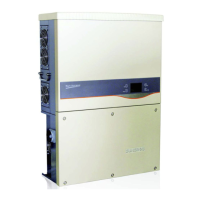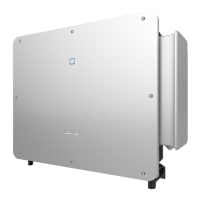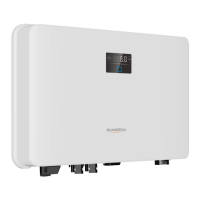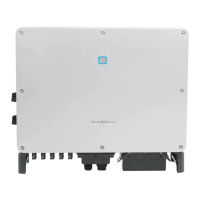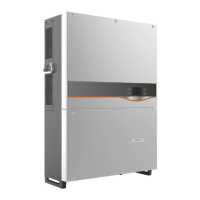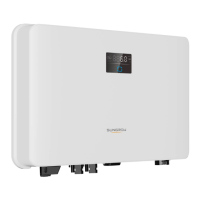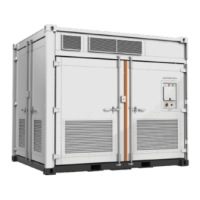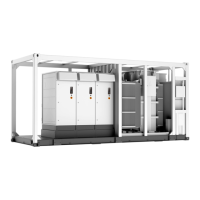49
To ensure the system reliability and device operation, PV cells on the DC side of
the inverter should be from the same manufacturer andnumbers of PV cells in
each string should be the same.
Check the PV arrays before grid-connection. The voltage of each DC main cable should be
the same and no more than the max. permissible DC voltage. Check carefully the polarity of
each DC main cable. Once the polarity in one DC main cable is incorrect, the PV arrays may
be damaged.
Make sure the environmental condition is stable since the voltage of PV array may change
with the solar radiation and the temperature of the PV cells. Record the PV array status via
the U-I curve. Commission the device when the PV array output status is stable.
The PV field circuit fault (module fault or module numbers deviation in certain
array), cable damages or connection looseness may cause the voltage deviation
exceeding 3% under stable environmental conditions.
• Record the environmental parameters (temperature, radiation, etc.).
• Measure the resistance of cables (between the terminal box and the inverter).
• Record accurately all the measured data.
7.3.4 Checking Grid Voltage
• Measure accurately the grid 3-phase line-to-line voltages: L1-L2, L1-L3, and L2-L3.The
voltages should not exceed the grid permissible voltage and the three phases are in
balance.
Adjust the transfer ratio of the transformer by qualified personnel if the grid
voltage deviation is large.
• Measure and record the grid frequency. Measured data should not exceed the grid
permissible frequency.
• Measure the THD and check the curve if possible. The inverter will stop running if the
THD is serious.
• Record accurately all the measured data.
7.4 Preparation before Starting
• Place the disassembled protection grills to their original positions and ensure the
connection is secure.
• Clean the device site. Make sure the position is clean without flammable or explosive
materials.
• Ensure the ventilation of the installation place.
System Manual 7 Commissioning

